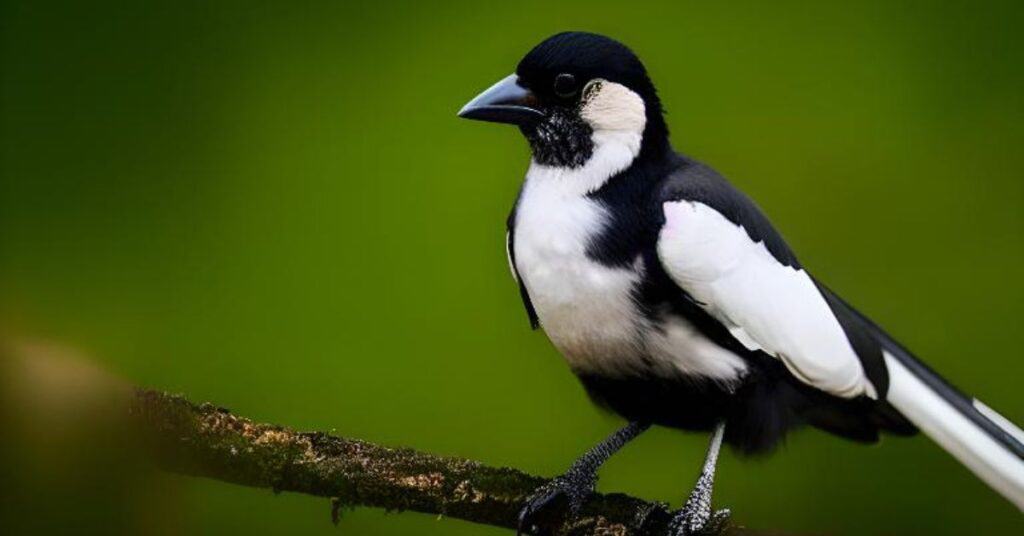If you are a birds lover, on thing you will never stop doing is exploring The Fascinating World of Magpies.
Magpies are intelligent and striking birds that have intrigued humans for centuries. With their distinctive black and white plumage and melodic calls, magpies hold a special place in folklore, literature, and popular culture.
In this comprehensive article, we will dive into the enchanting world of magpies, uncovering their fascinating history, diverse species, behavior, habitat, and much more.
The History of Magpies

Magpies have a rich history intertwined with human culture. They have been referenced in ancient mythology and folklore, often associated with both good and bad omens depending on the culture.
In some societies, magpies are seen as symbols of intelligence and good luck, while in others, they are considered harbingers of misfortune. Regardless of the beliefs associated with them, magpies have captured human imagination throughout history.
The Different Types of Magpies

There are several species of magpies distributed across various regions of the world. Some notable species include the Eurasian Magpie, Australian Magpie, Black-billed Magpie, and Yellow-billed Magpie. Each species possesses unique characteristics, ranging from size and coloration to habitat preferences and behavior.
The Magpie Lifespan
On average, magpies have a lifespan of 3 to 5 years in the wild. However, some individuals have been known to live up to 20 years or more, depending on factors such as habitat quality, availability of food, and protection from predators.
The Diet of Magpies
Magpies are omnivorous birds with a varied diet. They consume a combination of plant matter, insects, small vertebrates, eggs, and even carrion. Magpie’s diet can vary depending on the availability of food in their habitat and the season. Magpies are opportunistic feeders and can adapt to different food sources.
The Magpie’s Habitat
Magpies are adaptable birds that can thrive in various of habitats, including woodlands, forests, parks, gardens, and urban areas. They are known for their ability to coexist with humans and often make use of anthropogenic food sources, such as garbage bins or leftovers, in urban environments.
The Magpie’s Behavior
Magpies are highly intelligent birds known for their complex social behaviors and problem-solving abilities. They exhibit strong family bonds and live in hierarchical groups called “congregations.” These groups consist of an established breeding pair and their offspring from previous years. Magpies are also known for their vocalizations, including melodious calls and imitations of other bird species.
The Magpie’s Predators
Despite their intelligence and adaptability, magpies face predation from various animals. Common predators of magpies include raptors such as owls, hawks, and eagles, and larger mammals like foxes and cats.
Nest predation by other birds, such as crows or jays, can also pose a threat to magpie eggs and chicks.
The Magpie’s Mating Behavior
Magpies are monogamous birds, forming long-term pair bonds that can last for life. During the breeding season, male magpies engage in elaborate courtship displays, showcasing their intelligence and vocal abilities to attract a mate. Once a pair is formed, they work together to build a nest and raise their young.
The Magpie’s Chicks
Magpie chicks, also known as nestlings, hatch from eggs laid by the female. Both parents take on the responsibility of feeding and protecting the chicks.
The young magpies develop rapidly and leave the nest within a few weeks. After leaving the nest, they continue to receive parental care and gradually learn essential survival skills from their parents.
The Magpie as a Pet

Magpies are highly intelligent birds, which has led some people to consider them as potential pets. However, it is essential to note that magpies are wild animals with specific needs that are challenging to meet in a domestic setting.
In some countries, it is illegal to keep magpies as pets due to conservation concerns and the potential impact on their population in the wild. It is best to admire magpies in their natural habitat and support their conservation efforts.
Conclusion
Magpies are captivating birds that have left an indelible mark on human history and culture. Their intelligence, adaptability, and distinct appearance make them a subject of fascination and admiration.
From their diverse species to their complex behaviors and interactions within groups, magpies continue to inspire awe and curiosity.
By understanding the history, biology, and behavior of magpies, we can deepen our appreciation for these remarkable avian creatures and contribute to their conservation and well-being in the natural world.
FAQs:
Q: What is a group of magpies called?
A: A group of magpies is often referred to as a “tidings” or a “charm.”
Q: How long do magpies live?
A: Magpies have an average lifespan of 3 to 5 years in the wild, but some individuals can live up to 20 years or more.
Q: Can magpies be kept as pets?
A: It is generally not recommended or legal to keep magpies as pets, as they are wild birds with specific needs that are challenging to meet in a domestic environment.
Q: What do magpies eat?
A: Magpies are omnivorous and consume a variety of food, including plant matter, insects, small vertebrates, eggs, and carrion.

